
1. Fire
Winter is Canada’s worst season for house fires, says Fire Prevention Canada. Protect your family by:
• Ensuring space heaters have at least one metre of clearance on all sides;
• Having fireplaces and chimneys cleaned and inspected early in the season. Keep fires moderate-not roaring.
• Testing your home’s carbon monoxide and smoke detectors;
• Enforcing an indoor no-smoking rule;
• Keeping the Christmas tree watered, and turning off tree lights before bed, or when leaving the house.
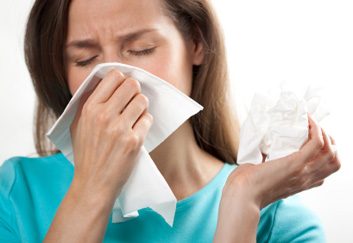
2. Seasonal illnesses like cold and flu
Upper respiratory infections (URIs) with fever, are the biggest cause of wintertime emergency-room admissions for kids under age 3, says Dr. Ortiz Alvarez, a paediatrician in Antigonish, Nova Scotia and member of the Canadian Paediatric Society’s Acute Care Committee.
URIs are acute viral infections, including the common cold, flu, and other head or chest infections. These infections can be particularly harsh for children with eczema or asthma.
Families can cut their risk with two simple moves:
1. “Vaccination can help prevent severe upper respiratory infections such as influenza and pneumococcal infections,” says Dr. Alvarez. Stay up to date with childhood vaccinations, and get the annual flu shot.
2. Wash hands frequently, for at least 20 seconds.

3. Choking, strangulation and entrapment injuries
Breathing emergencies like choking, strangulation and entrapment are a leading cause of injury-related death among Canadian children, says the Hospital for Sick Children’s Safe Kids Canada program.
Be vigilant when visiting other people’s homes over the holidays. Do a three-step safety audit when you arrive:
1. Ensure drapery cords are out of reach of young children (BYO painter’s tape to temporarily secure cords to the wall if necessary);
2. Remove blankets and pillows from cribs, bassinets and play pens, and don’t use those dating pre-1986 (before federal legislation ensured adequate safety standards for mattress support);
3. Keep choking hazards away from kids under age 3 (nuts, popcorn, hotdogs and carrots unless shredded or diced, latex balloons, or any toys that can fit through a cardboard toilet paper roll).
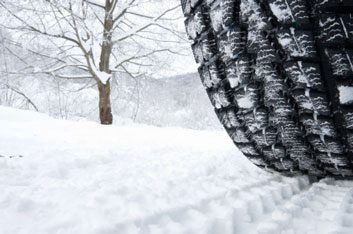
4. Motor vehicle accidents
Cut your accident risk with this common-sense safety motto: Stay alert, slow down and maintain control.
Here are some more safe-driving tips to follow:
• Never drive under the influence of alcohol or drugs (including drowsiness-inducing prescription and over-the-counter medications).
• Don’t rush! Leave early for events.
• Seat infants and kids in age- and weight-appropriate car seats or boosters, wearing sweaters or fleece, not parkas or snowsuits-which they could “fly” out of in the event of a major collision.
• Check tire air pressure, which decreases in cold weather. If you live in a snowy region, opt for winter tires rather than “all-season” or “high-performance” tires.
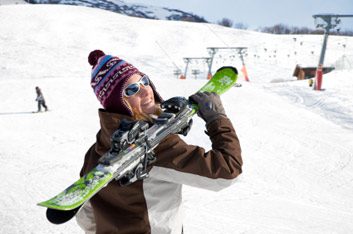
5. Sports- and play-related injuries
“The National Trauma Registry Report from 2008-2009 showed that 13 percent of 1,827 injury cases in people under age 20 involved sports or recreational activities at the time of the injury,” says Dr. Alvarez.
According to Dr. Alvarez, the most common winter-sport hazards are:
• In ages 5 through 14: snowboarding, as well as simply slipping, tripping or stumbling while playing in the snow.
• In ages 15 through 24: skiing.
Protect your kids by ensuring snowboard, ski, sled and skate activities include protective equipment (ie. a helmet). Winter boots should fit well to minimize trips.
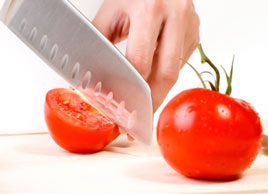
6. Food-borne illness
It’s easy to get food poisoning from improperly handled foods, insufficiently cleaned kitchen utensils or, in the case of food allergies, inadequately separated food prep surfaces, says Mary Bamford, registered dietitian and Director of Nutrition at Toronto’s Newtopia health clinic.
Here are Bamford’s top tips for dodging food-borne illness during holiday feasts, buffets and potlucks:
1. Never cut food on the countertop. Although many contemporary counter surfaces are designed for direct cutting, they’re harder to sterilize than cutting boards, making E coli contamination a bigger threat. (Sponges harbour mucho bacteria, too, so nuke ’em in the microwave for one full minute daily. And toss used towels into the laundry ASAP!)
2. Avoid raw(ish) animal products. Kids, seniors, pregnant women and anyone who is immune-comprised, should skip potentially listeria-containing, semi-soft cheeses like Camembert, Brie or blue. At brunch, opt for (or offer) eggs fully cooked, not soft poached.
3. Keep food colder or hotter than the bacteria-friendly, “food-poisoning danger zone,” of 4- to 60-degrees Celsius. When serving food, keep it out for less than one hour, unless you can maintain proper temperatures with ice or a heated chafing dish.
4. Bring out the icebox. Considering using the back deck or garage as an “extra fridge”? That’s only appropriate if there’s a deep freeze outside. If it’s above zero, use an icebox and ice packs to keep food under 4-degrees Celsius.
5. If you have a food allergy let your host know. Offer to bring your own meal if you’re worried about cross-contamination
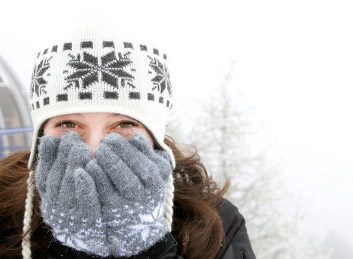
7. Frostbite
One often-overlooked winter danger? “Frostbite due to lack of proper clothing, such as gloves, hats and proper foot wear,” says Dr. Ortiz Alvarez.
Dress for the cold, whether you’re seeking outdoor adventure-or just headed to the ‘burbs for Boxing Day shopping (what if your car dies on the highway?). Even if you’re fine driving in a hoodie and boots, be sure to pack a winter coat, gloves and hat, “just in case.”
Related:
• How not to get sick this winter
• 9 safety tips for winter sports
• 5 healthier holiday treats
